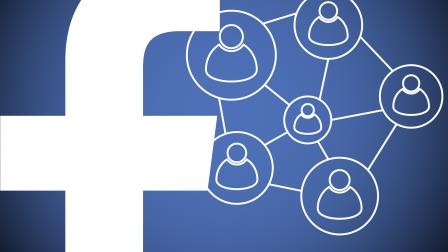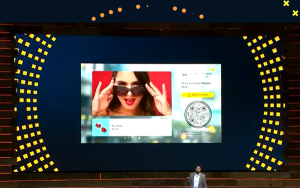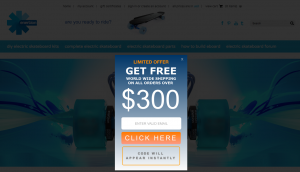Facebook’s shutdowns of FBX and LiveRail and expansion of Audience Network show an ad tech strategy oriented to advertisers and geared to protecting its data.

Maybe Facebook doesn’t need to own the entire ad tech stack to overtake the entire digital ad ecosystem. Or maybe Facebook just doesn’t need to own it in the traditional sense.
Companies like Google and Verizon’s AOL have assembled end-to-end stacks that cover just about all the adtech tools that an advertiser or publisher needs to buy and sell digital ads with the ease of booking a hotel on Kayak or auctioning off an item on eBay. These adtech stacks align nicely with LUMA Partners’ famed LUMAscape chart that plots these tools across a horizontal spectrum from advertisers on the left to publishers on the right.
For a while, Facebook had looked like it was following that playbook. It had opened up an ad network, acquired an adtech firm that helped publishers figure out how to get the best deals for their inventory and started testing an automated ad-buying tool that helped advertisers place better bids on publishers’ inventory, among other adtech endeavors. But somewhere along the way, Facebook seems to have realized that strategy was stretching the company to areas that were too far afield from its core ad sales business, like enterprise software sales, and risked compromising its crown jewel: the data it has on 1.65 billion people.
Now, Facebook is flipping the end-to-end horizontal stack on its head. Instead of making a direct play for each part of the digital ad industrial complex, the social network appears to be taking a vertical, food-chain-like approach in which Facebook centers on advertisers and is able to maintain control the rest of the way down.
“They just realized: focus on the demand, build amazing ad products and data and targeting technologies and then the rest will follow. And that’s what’s happening,” said 360i president Jared Belsky.
Facebook’s strategy came into clearer view late last month, when the company made several moves to consolidate its adtech portfolio. Within a few days, Facebook announced that it was shutting down the Facebook Exchange (FBX) real-time bidding platform and publisher-centric adtech arm LiveRail and expanding the reach of its Audience Network ad network to target non-Facebook users and Facebook users alike.
None of these moves were surprising, and all of these moves appear to reinforce the notion that Facebook has figured out how to expand the breadth of its ad business on and off Facebook while keeping its data safeguarded within its walled garden.
For Facebook to extend its digital ad dominance outside of its own walls, it had two options, according to Scott Braley, general manager of programmatic at video tech firm Ooyala and Facebook’s former US sales boss for Atlas. It could build out an adtech platform that gives some control to other parties, or it could retain that control internally and build an ad network, “much as they have, leveraging their strong structural position on the demand side,” he said.
FBX’s prolonged demise crystallizes Facebook’s adtech strategy. The company had introduced the real-time exchange in June 2012 as a way for brands to instantaneously retarget their site visitors with ads on Facebook. But over the past couple of years, amid the company’s mobile march, Facebook kept FBX locked up on desktop and introduced alternatives that kept Facebook’s data closer to its chest. Its Custom Audiences targeting option added the same kind of site retargeting functionality that was FBX’s bailiwick and extended that targeting to Facebook’s all-important mobile ads. And over the past 18 to 24 months, Facebook has been pushing companies, like AdRoll, that bought ads through FBX, to turn their attention to Facebook’s Ads API. By the time Facebook announced FBX’s shutdown on May 25, “[W]e had 98 percent of our Facebook spend going through the API versus FBX,” said AdRoll CMO Adam Berke.
Facebook’s data appears to have played a major role in Facebook directing automated ad buyers’ attention to its Ads API, which is a less permeable way of using Facebook’s data to buy and target ads.
“Facebook wants to be careful about leaking data, and they view the identity data that they have as one of their crown jewels,” said Berke. “If you’re in the RTB [real-time buying] environment, there might be ways to piece together some of that data and use Facebook to develop your own ID graph. And that of course is something Facebook doesn’t want, both from a competitive point of view, as well as a privacy point of view.”
That stance likely also played into Facebook’s decision to kill off an automated ad-buying tool it had been testing, as well as LiveRail, a supply-side platform that publishers used to manage their inventory and match available slots with the best ad deals.
“They’re so protective of their data, and the only way they’re going to let people use it is within their walled garden. If you think about programmatic — an Atlas DSP, FBX, LiveRail –[it] would have required them to make their data available to the masses. And Facebook wasn’t going to have that,” said Belsky.
Facebook also may have also wanted to avoid dealing with all the headaches of operating another enterprise software business. The company’s experience with Atlas — which was supposed to roll out as a full ad server with creative decisioning in addition to a measurement tool and has taken longer than planned to get to that point, according to one person familiar with the matter — may have led Facebook to take a hard look at LiveRail.
“It seems pretty clear that they don’t want to be in the software business. They want to bundle media with software. They only want to use software as a means to sell media,” said Pivotal Research senior analyst Brian Wieser
When Facebook agreed to buy LiveRail in July 2014, the ad tech firm gave Facebook a foothold in the automated sale of other publishers’ video ads with the potential to expand that off-network business to other ad formats. But it wasn’t the only way Facebook was coming after publishers’ ad sales. The company had unveiled Audience Network only a few months earlier. While LiveRail centered around publishers’ video ad sales, Audience Network focused on display ads in mobile apps. But it didn’t take long for Audience Network and LiveRail to start to tread on each other’s turf.
LiveRail may have always been the Voldemort to Audience Network’s Harry Potter. As Professor Trelawney prophesied in J.K. Rowling’s series, “neither can live while the other survives.” Within months of the acquisition, LiveRail execs began meeting with publishers about also handling their display ad sales. A year later, LiveRail officially added in-app display ads to its portfolio, and Audience Network added in-app video ads to its mix.
Then things started to take a turn. By the end of 2015, Facebook had eliminated 75 percent of the inventory from LiveRail because it was considered low-quality and/or fraudulent. This year, Audience Network has continued to add inventory. It started the year by adding mobile web ads and eventually desktop and mobile web video ads. It was becoming hard to see why LiveRail would need to survive while Audience Network thrived.
The divergent paths that LiveRail and Audience Network took underscored a fundamental difference between the two, a similar difference to the one between FBX and Facebook’s Ads API. LiveRail was largely an open exchange, more beholden and exposed to the publishers it worked with. Audience Network, meanwhile, offered more control to Facebook. Since Facebook simply syndicated brands’ Facebook buys across Audience Network, those typically higher-priced buys allowed Facebook to keep the upper hand on publishers in the network.
There was another fundamental difference between LiveRail and Audience Network. LiveRail served publishers and required Facebook to cater more directly to those publishers. Audience Network served advertisers — and by extension, publishers — meaning that there was a more direct relation between Facebook’s investment in Audience Network and the return it would see on that investment.
“On LiveRail, it was more the publisher side where it mattered. The advertiser didn’t care necessarily what tool was being used for mediation or yield management or ad serving. They just cared about the publisher they were working with ultimately,” said Wieser.
“Adtech is necessary [for Facebook to be able to apply its data to targeting ads on other publishers’ properties], but being the supplier [of] the adtech to the rest of the publisher community means 1) you’re letting that publisher community figure out how to deploy that adtech, and 2) to continue to win that race and be major player takes a lot of time and attention,” said Matt Spiegel, senior VP and GM of marketing and technology solutions at consultancy MediaLink. “If you believe there will be more consolidation of advertiser dollars to fewer bigger, key, more sophisticated, premium partners, maybe that business is a little less interesting.”
The shutdown of LiveRail doesn’t mean Facebook has exited
(61)
Report Post






